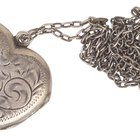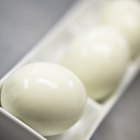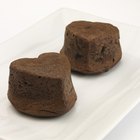
A boiled egg should ordinarily show only two colors: the rich yellow of its yolk and the clean, firm cooked whites. All too often, however, you see a third color, a dismal layer of gray or gray-green surrounding the cooked yolk. It doesn't impair the egg's edibility, but it does take away from its appearance. This gray layer is a sign that the egg was overcooked, which created an unwanted chemical reaction.
Under the Hood
The gray layer is caused by a reaction between the iron in the egg yolks and sulfur in the whites. When the eggs are cooked too long or at too high a temperature, they form a drab compound called "ferrous sulfide." You might also notice a distinct sulfury odor when you peel the eggs. To avoid this reaction, cook the eggs gently at a low temperature. The American Egg Board recommends covering the eggs by at least 1 inch with cold water, and bringing them barely to a boil. As soon as they boil, remove the pot from its burner and cover it. After 12 minutes, large eggs will be perfectly -- and gently -- hard boiled.
Related Articles

How to Overcook Hard Boiled Eggs

How to Tarnish Jewelry on Purpose

Shelf Life of Hard Boiled Eggs

How to Prevent Dark Circles in Hard ...

How to Cook Eggs Sunny Side Up Without ...

How Can I Tell If an Egg Is Hard-Boiled ...

What Causes a Green Ring Around the ...

My Hard-Boiled Eggs Are Soggy in the ...

How to Cook a Hard Boiled Egg With a ...

What Is the Difference Between a Fried ...
How to Cook Over-Easy Eggs in a ...

Calories of Egg Whites Vs. Whole Eggs
How to Make Eggs Over Easy

Why Do Boiled Eggs Smell?

How to Make Quick Easy Egg Salad

The Average Weight of a Boiled Egg
How to Make an Overeasy Egg
How to Keep Yolks in the Center of Hard ...

What Is a Souffle Dish?

Does Lemon Juice Help Keep Raw Eggs ...
References
- On Food and Cooking: The Science and Lore of the Kitchen; Harold McGee
Writer Bio
Fred Decker is a trained chef and prolific freelance writer. In previous careers, he sold insurance and mutual funds, and was a longtime retailer. He was educated at Memorial University of Newfoundland and the Northern Alberta Institute of Technology. His articles have appeared on numerous home and garden sites including GoneOutdoors, TheNest and eHow.
Photo Credits
Stockbyte/Stockbyte/Getty Images